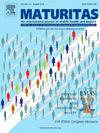The future of healthy ageing: Wearables in public health, disease prevention and healthcare
IF 3.6
2区 医学
Q2 GERIATRICS & GERONTOLOGY
引用次数: 0
Abstract
Wearables have evolved into accessible tools for sports, research, and interventions. Their use has expanded to real-time monitoring of behavioural parameters related to ageing and health. This paper provides an overview of the literature on wearables in disease prevention and healthcare over the life course (not only in the older population), based on insights from the Future of Diagnostics Workshop (Leiden, January 2024).
Wearable-generated parameters include blood glucose, heart rate, step count, energy expenditure, and oxygen saturation. Integrating wearables in healthcare is protracted and far from mainstream implementation, but promises better diagnosis, biomonitoring, and assessment of medical interventions.
The main lifestyle factors monitored directly with wearables or through smartphone applications for disease prevention include physical activity, energy expenditure, gait, sleep, and sedentary behaviour. Insights on dietary consumption and nutrition have resulted from continuous glucose monitors. These factors are important for healthy ageing due to their effect on underlying disease pathways.
Inclusivity and engagement, data quality and ease of interpretation, privacy and ethics, user autonomy in decision making, and efficacy present challenges to but also opportunities for their use, especially by older people. These need to be addressed before wearables can be integrated into mainstream medical and public health strategies. Furthermore, six key considerations need to be tackled: 1) engagement, health literacy, and compliance with personalised feedback, 2) technical and standardisation requirements for scalability, 3) accountability, data safety/security, and ethical concerns, 4) technological considerations, access, and capacity building, 5) clinical relevance and risk of overdiagnosis/overmedicalisation, and 6) the clinician's perspective in implementation.
健康老龄化的未来:公共卫生、疾病预防和医疗保健中的可穿戴设备
可穿戴设备已经发展成为体育、研究和干预的便捷工具。它们的用途已扩大到实时监测与老龄化和健康有关的行为参数。本文概述了可穿戴设备在生命过程中的疾病预防和医疗保健方面的文献(不仅适用于老年人群),基于诊断的未来研讨会(莱顿,2024年1月)的见解。可穿戴设备生成的参数包括血糖、心率、步数、能量消耗和氧饱和度。将可穿戴设备整合到医疗保健中是一个漫长的过程,离主流实施还很远,但它有望更好地诊断、生物监测和评估医疗干预措施。通过可穿戴设备或智能手机应用程序直接监测的主要生活方式因素包括身体活动、能量消耗、步态、睡眠和久坐行为。对饮食消耗和营养的了解源于连续的血糖监测。这些因素对潜在的疾病途径有影响,因此对健康老龄化很重要。包容性和参与度、数据质量和易解释性、隐私和道德、决策中的用户自主权以及有效性对它们的使用构成了挑战,但也带来了机遇,尤其是对老年人而言。在可穿戴设备融入主流医疗和公共卫生战略之前,这些问题需要得到解决。此外,需要解决六个关键考虑因素:1)参与、卫生知识普及和遵守个性化反馈;2)可扩展性的技术和标准化要求;3)问责制、数据安全/保障和伦理问题;4)技术考虑、获取和能力建设;5)临床相关性和过度诊断/过度医疗化的风险;6)临床医生在实施中的观点。
本文章由计算机程序翻译,如有差异,请以英文原文为准。
求助全文
约1分钟内获得全文
求助全文
来源期刊

Maturitas
医学-妇产科学
CiteScore
9.10
自引率
2.00%
发文量
142
审稿时长
40 days
期刊介绍:
Maturitas is an international multidisciplinary peer reviewed scientific journal of midlife health and beyond publishing original research, reviews, consensus statements and guidelines, and mini-reviews. The journal provides a forum for all aspects of postreproductive health in both genders ranging from basic science to health and social care.
Topic areas include:• Aging• Alternative and Complementary medicines• Arthritis and Bone Health• Cancer• Cardiovascular Health• Cognitive and Physical Functioning• Epidemiology, health and social care• Gynecology/ Reproductive Endocrinology• Nutrition/ Obesity Diabetes/ Metabolic Syndrome• Menopause, Ovarian Aging• Mental Health• Pharmacology• Sexuality• Quality of Life
 求助内容:
求助内容: 应助结果提醒方式:
应助结果提醒方式:


